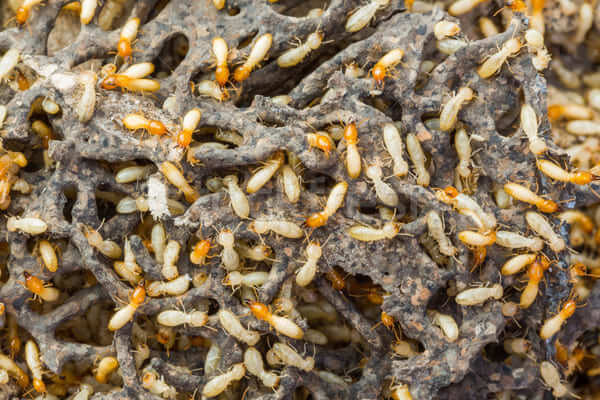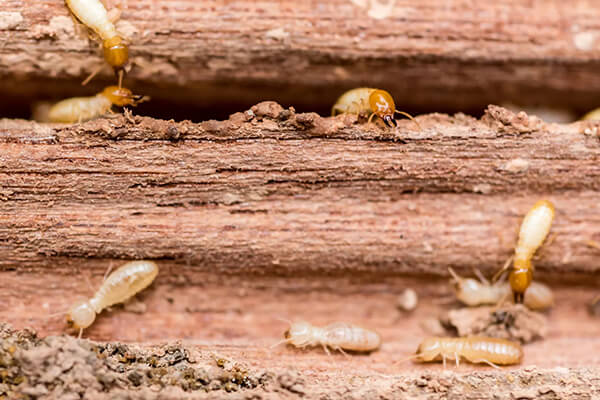INTRODUCTION
Termites are incredibly difficult to manage once they infest your property. They typically live-in colonies near wood and wooden objects such as furniture, cabinets, door and window frames, hardwood floors, etc., and areas that are damp, making Australia a termite haven. Termites are ruinous and damage your property. You must keep a lookout for signs of a termite infestation, for instance, swollen floors, an uncomfortable odour, buckling wood, or mazes on walls. To avoid such situations for your properties, it is a wise idea to let experts perform pre-purchase property investigations. This article is designed to help you get all the information you need to know about termite infestations in a property before you buy it.
WHAT DO TERMITES LOOK LIKE?
You might find it surprising, but there are over 300 species of termites in Australia alone! However, a small redeeming fact is that only a few of them are troublesome and cause damage to your property. Among them, Subterranean termites that are also famously known as white ants yield the highest degree of damage around the country. They are primarily found in materials like timber.

Due to size, Subterranean termites and black ants can easily be confused for each other. Remember, however, that termites have a relatively paler colour as compared to their ant counterpart. Similarly, alates (termites with wings) can be mistaken for moths, for they fly from one place to another in search of mates or start a new colony. Pay special attention to the physical attributes of termites to differentiate them from other insects. A property inspector will efficiently be able to assist you in such matters.
LEGISLATION IN AUSTRALIA
Termite infestations in Australia is a big menace, so much so that it has particular legislation to itself. The Building Code of Australia requires all new homes and extensions to have a termite management system in place in all states, except Tasmania, where the termite risk is negligible).
Homes built after July 1995 must have a ‘durable notice’ of treatment fixed to a prominent position in the building, listing the:
- Method of termite management
- Date of installation
- Life expectancy (for chemical barriers)
- Recommended future inspections.
EARLY INDICATORS OF A TERMITE INFESTATION IN YOUR PROPERTY
Termites can cause major structural and economic damage to homes and commercial buildings. There are numerous indicators that will help you figure out if your property has been infested by termites. Professional property inspectors also look for such signs. We have made a handy list that describes a few:
- Discarded Wings
As aforementioned, a few species of termites have wings that they use for multiple purposes. Such termites lose their wings after finding a mate. So if you find clipped wings lying around on the floor, you might want to consider getting your property inspected. It can be an early sign of a new infestation or a current infestation reaching maturity.
- Noises in the Walls
Termites are noisy workers. They make a clicking sound when they chew through wood. Their mechanism of warning the rest of the colony of danger is to bang their bodies against the walls of their tunnels. All these features contribute to a distinct sound. If you listen closely and hear such sounds coming from your walls, roof or floor- you should get termite managers to your property as soon as possible.
- Ill-fitting doors and windows
It is a well-known fact that termites produce moisture as they eat through wood. For your furniture, this usually means the wood becomes warped and weak, resulting in discoloration and changing shapes of doors and window frames.
- Tunnels in wood
Also known as ‘galleries,’ a colony of termite work in long tunnels on wooden surfaces. Such galleries are visible to us as patterns in logs and other bits of timber. If you find any such tunnels, please consult an expert.
- Hollow sounding walls
Another activity you can do to check whether or not your property has termite infestation is to knock on your walls. If you hear a hollow sound, that’s a bad sign, and you must call a professional immediately.
- Frass (termite droppings)
If you find black marks and dark powdery substances near wooden structures, get that looked at. Drywood termites are known to cast their droppings outside the tunnels as they work through them.
- Cracks in wood or paint
When termites make their way through internal wooden structures, their consequences are visible on the external surfaces as well. Keep an eye out for clear cracks in beams or paint on wooden surfaces.
WHAT TO DO IF YOU FIND A TERMITE INFESTATION
Property inspectors are skilled in examining every aspect of your house, and you must be present when the inspection is being done. During a termite inspection particularly, an inspector would check:
- All accessible wooden structures inside the house like doors, window frames, under the roof, etc.
- Outside the building and its immediate surroundings
- Gardens, wooden fences
- Nearby trees and stumps
- Any other timber structures and trees on the property, up to 50 meters from the main building
- The presence of existing termite barriers and damage
- The probability of the property getting infected by termites by considering factors like subfloor ventilation and drainage, prominent damp areas, etc.
At the end of the inspection, any efficient property inspector would present you with a report that should include the following details for you to plan according to:
- The areas inspected (mentioning any inaccessible areas)
- Termite activity and possibility
- Suggestions to avoid any infestation in the future
- A termite management plan if termite activity is found (describing methods of pest control, reasonable limitations, detailed assessment, costs, and expected outcomes)
QUESTIONS TO ASK WHEN GETTING TERMITE INSPECTION DONE
You want to know your property is in safe hands, and when you trust a property instructor to work there, you have certain apprehensions. You may ask them the following questions to be more satisfied with the entire process:
- How long has the company been established?
- Do they have valid, current license and public liability insurance certificates while on the job?
- What are the qualifications, skills, and experience of the inspector?
- Will they meet or exceed the requirements of the Australian Standard?
(AS4349.3 provides guidelines for inspecting buildings for timber pests; AS3660.2 deals with termite management in and around existing buildings and structures) - How much time will a regular inspection take?
- Will they provide a report upon completion of the inspection? If yes, what all would that contain?
- If termites are found, what treatment methods do they recommend?
- If they provide termite management services as well, will they explain the products they’re likely to use?
Ask for the warranty provided for all services and make sure to read the fine print as well. Taking such measures goes a long way in building a productive relationship with your property inspector and ensuring you receive services that meet all your expectations.
HOW TO REDUCE THE RISK OF TERMITES
While calling a skilled professional for help is always a great idea, you can do many things to avoid the risk of termite infestations too! We’ve compiled a list of easy, doable measures you can take to keep your property safe from termites:
- Fix any moisture problems like poor drainage, leaking pipes, or inadequate ventilation, as a damp environment helps termites breed faster.
- Check the immediate surroundings of your property, like gardens that should have an adequate gap from the building premises.
- Always seek to declutter your house and keep it clear. You don’t want to store items unnecessarily that restrict ventilation.
- Regularly remove any wood that comes in direct contact with the walls of your property or nearby, for instance, fallen branches on the roof.
- Pay attention to certain construction methods and materials that can reduce termite risk by a large margin when you’re looking to construct a new house.
- It’s recommended you have a thorough pest inspection at least once a year, or more often if you live in areas with high termite risk.
- Use the three types of termite management- physical barriers, chemical barriers, and monitoring baits- efficiently to keep your property safe.

